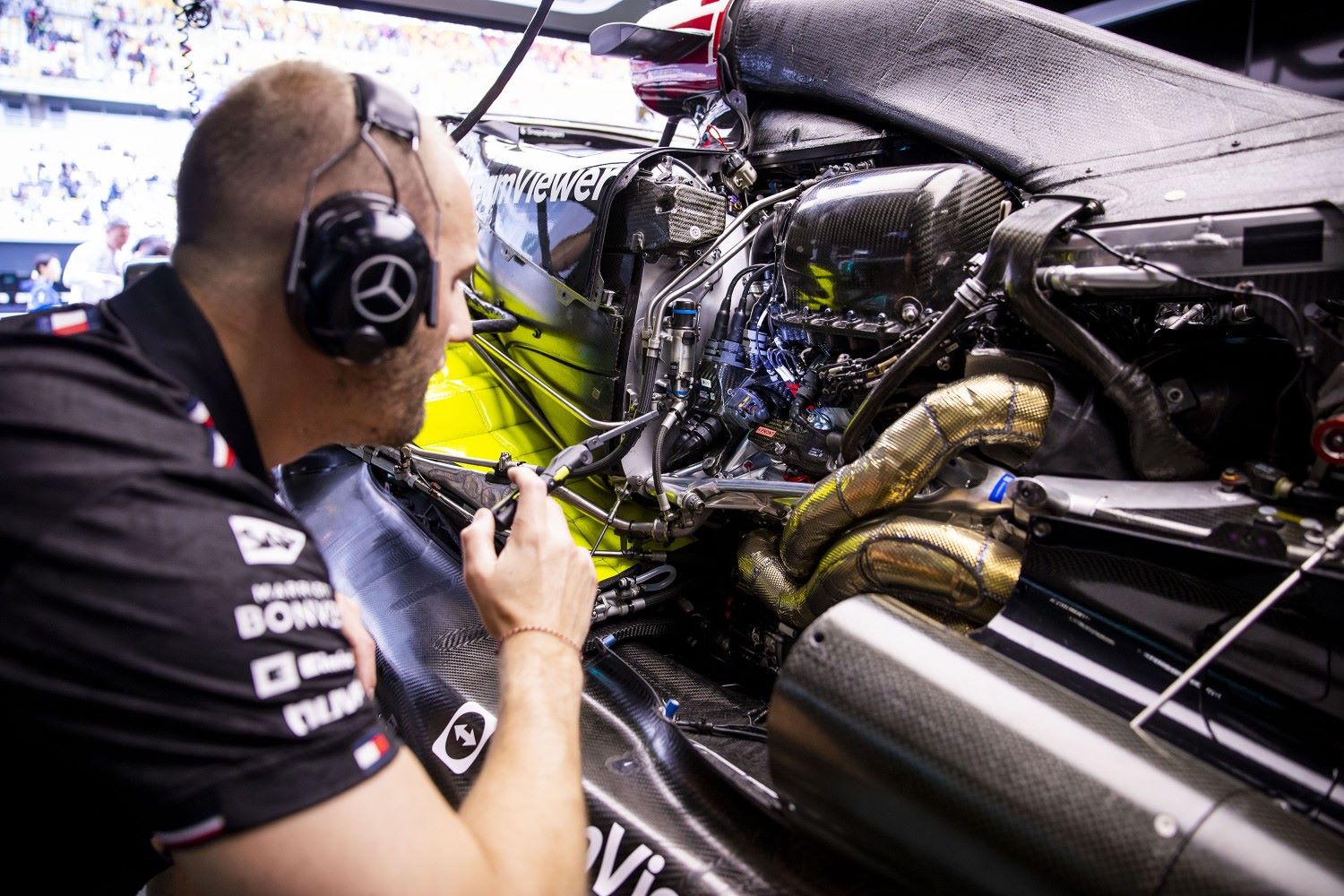Formula 1 News: The Great 2026 Engine Misstep
In the polished halls of the FIA’s Paris headquarters, tension crackled in early 2025. Formula 1 had staked its future on the 2026 engine regulations—a bold pivot to turbocharged V6 power units with a near 50-50 split between internal combustion and electric power, fueled by sustainable synthetic fuels.
–by Mark Cipolloni–
The goal was to cement F1’s green credentials while attracting new manufacturers like Audi and Cadillac. But as the season unfolded, it became clear the FIA had made a colossal blunder, sparking a desperate push to revive the screaming V8s of yesteryear.
The 2026 Blunder
The 2026 regulations promised innovation: 1.6-liter turbo V6 engines with enhanced hybrid systems, scrapping the complex Motor Generator Unit-Heat (MGU-H) used in the 2014-2025 engines in favor of a beefier Motor Generator Unit-Kinetic (MGU-K) delivering 350kW of electric power. Sustainable fuels would power the combustion side, aligning F1 with automotive trends and environmentalists.
Cadillac, set to join the grid in 2026, and Audi, entering the same year, bought into the vision, investing heavily in the tech-heavy formula. But by mid-2024, the cracks were undeniable.
Testing exposed the new engines as a disaster. They were heavy—adding nearly 80kg to car weights—astronomically expensive, with development costs estimated at $150 million per manufacturer, straining F1’s budget cap.
The loss of the MGU-H, meant to simplify things, backfired; the amped-up MGU-K demanded complex cooling systems, driving up costs and reliability issues. Teams reported sluggish performance in simulations, with lap times at power-hungry tracks like Spa projected to drop significantly.
Fans, already nostalgic for the high-revving V10s and V8s, took to X in droves, slamming the muted V6s. One viral post read, “F1’s turning into an EV snoozefest. Bring back the noise!”
FIA President Mohammed Ben Sulayem didn’t mince words at the British Grand Prix. “These engines are too heavy, too costly, too quiet,” he fumed. “This isn’t the F1 we promised.”
The 2026 rules, meant to be a leap forward, were alienating teams, fans, and even new entrants like Cadillac, who worried their debut would be hamstrung by an uncompetitive power unit.
The Backlash and the Crisis Summit
The backlash was fierce. Red Bull, partnering with Ford for their own powertrains, and Ferrari, guardians of F1’s engine legacy, demanded a course correction. Christian Horner, Red Bull’s former team principal, warned of a repeat of 2014, when Mercedes’ hybrid dominance crushed competition. “We need engines that level the playing field,” he told Autosport.
Fans amplified the noise, with a YouTube poll by The Race showing 88% favoring a return to V8s or V10s with sustainable fuels over the 2026 hybrids. X lit up with clips of Sebastian Vettel’s V8-powered Red Bull screaming through Monza, captioned, “This is what F1 should sound like.”
F1 CEO Stefano Domenicali fueled the excitement, telling Sky Sports, “A screaming V8 with green fuel—it’s the soul of F1 with a modern twist.” The proposal promised 60% cost reductions, lighter cars, and the raw sound fans craved.
The FIA acted fast. On September 11, 2025, after the Italian Grand Prix, they called an emergency summit in Monza with teams and manufacturers. The agenda: abandon the 2026 V6 hybrids early and fast-track a return to 2.4-liter V8s with simplified hybrid systems, powered by sustainable fuels.
But then the summit was abruptly postponed to give engine manufacturers a chance to study the subject in more depth.
Not everyone was convinced. Audi, whose F1 entry leaned on the 2026 hybrid tech, pushed back hard. “We committed to electrification,” an Audi engineer told Motorsport.com. “V8s feel like a U-turn.” Cadillac, with IndyCar star Colton Herta testing for their 2026 debut, faced uncertainty.
The engine pivot threatened their preparations, and Herta’s F2 campaign to secure super license points now carried added pressure—if Cadillac’s power unit flopped, his F1 shot could fizzle. A Cadillac insider admitted, “We’re all-in, but this chaos isn’t helping.”
The V8 Revival Rush
Ben Sulayem proposed a compromise: run the V6 hybrids from 2026 to 2029, then introduce V8s with a basic KERS system by 2030. The new engines would slash costs, cut 80kg from car weights, and deliver the visceral roar fans demanded, all while staying green with synthetic fuels.
Red Bull and Ferrari backed the plan, eager for simpler, competitive engines. Mercedes, wary of mid-cycle changes, urged caution. “Let’s race the 2026 engines first,” Toto Wolff said in Shanghai. Honda, re-entering F1, stayed cagey, while Audi dug in against the V8 shift. The FIA needed four of five manufacturers to agree on a “fundamental” change, leaving the V8 revival in limbo.
The Fallout
As 2025 drew to a close, F1 is at a crossroads. Fans on X celebrated the V8 push, sharing nostalgic clips of Fernando Alonso’s Renault V8 howling through Monaco, but others questioned the retreat from cutting-edge tech.
“Sustainable V8s sound epic, but isn’t F1 about pushing boundaries?” one user posted. Teams face a logistical mess, balancing 2026 development with a potential 2030 overhaul. For Herta and Cadillac, the stakes were sky-high. Herta’s F2 stint, critical to his F1 future, now unfolded against a backdrop of technical uncertainty. A weak 2026 power unit could sink Cadillac’s debut, leaving Herta stranded.
The FIA’s 2026 engine blunder had shaken the sport. The rush to V8s, driven by fan passion and Ben Sulayem’s vision, aimed to recapture F1’s soul and save money, but the path was fraught.
Will the sport embrace its roaring past or stumble through its hybrid present?
In the paddock, one thing is clear: the engine saga is a race as intense as any on the circuit.
